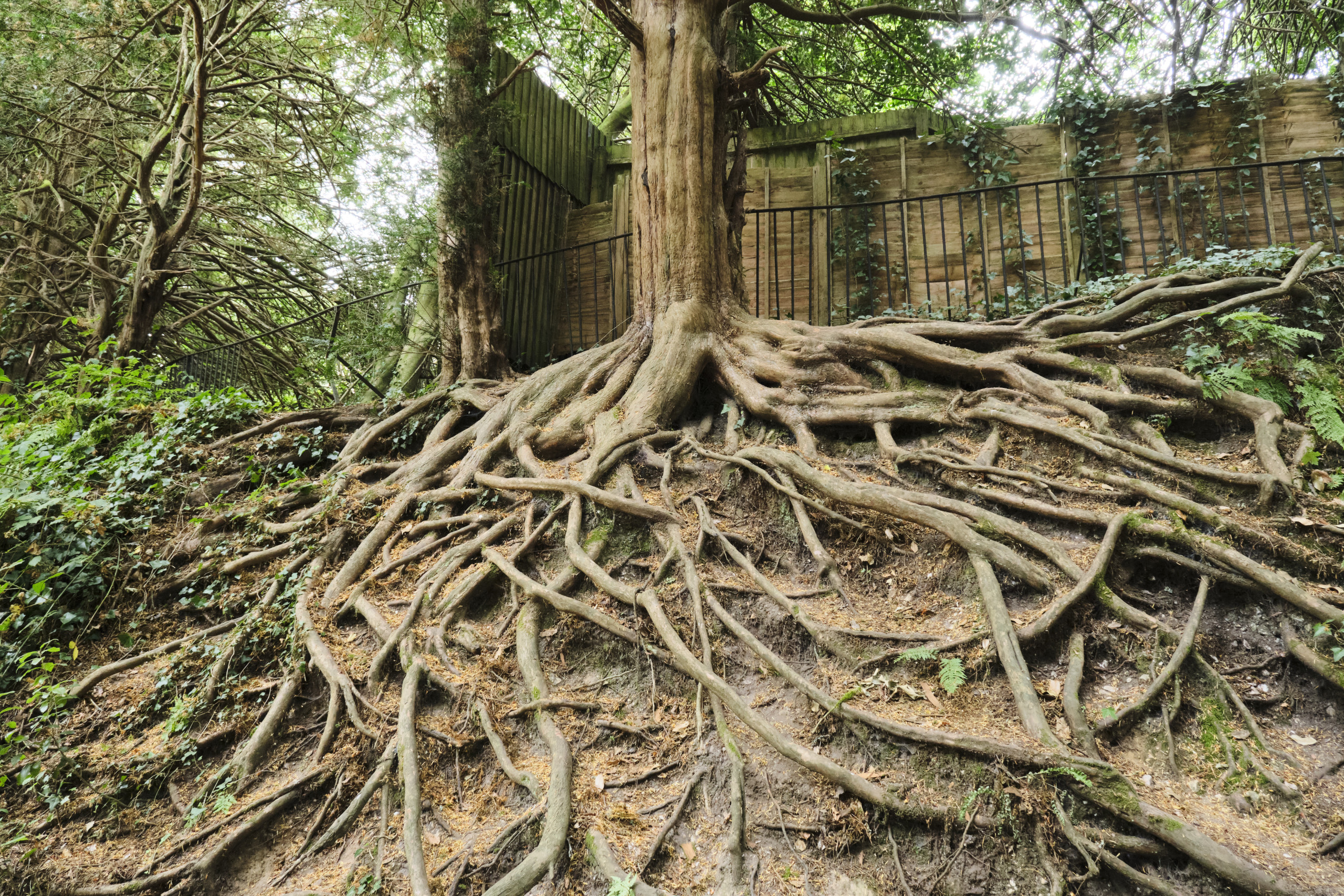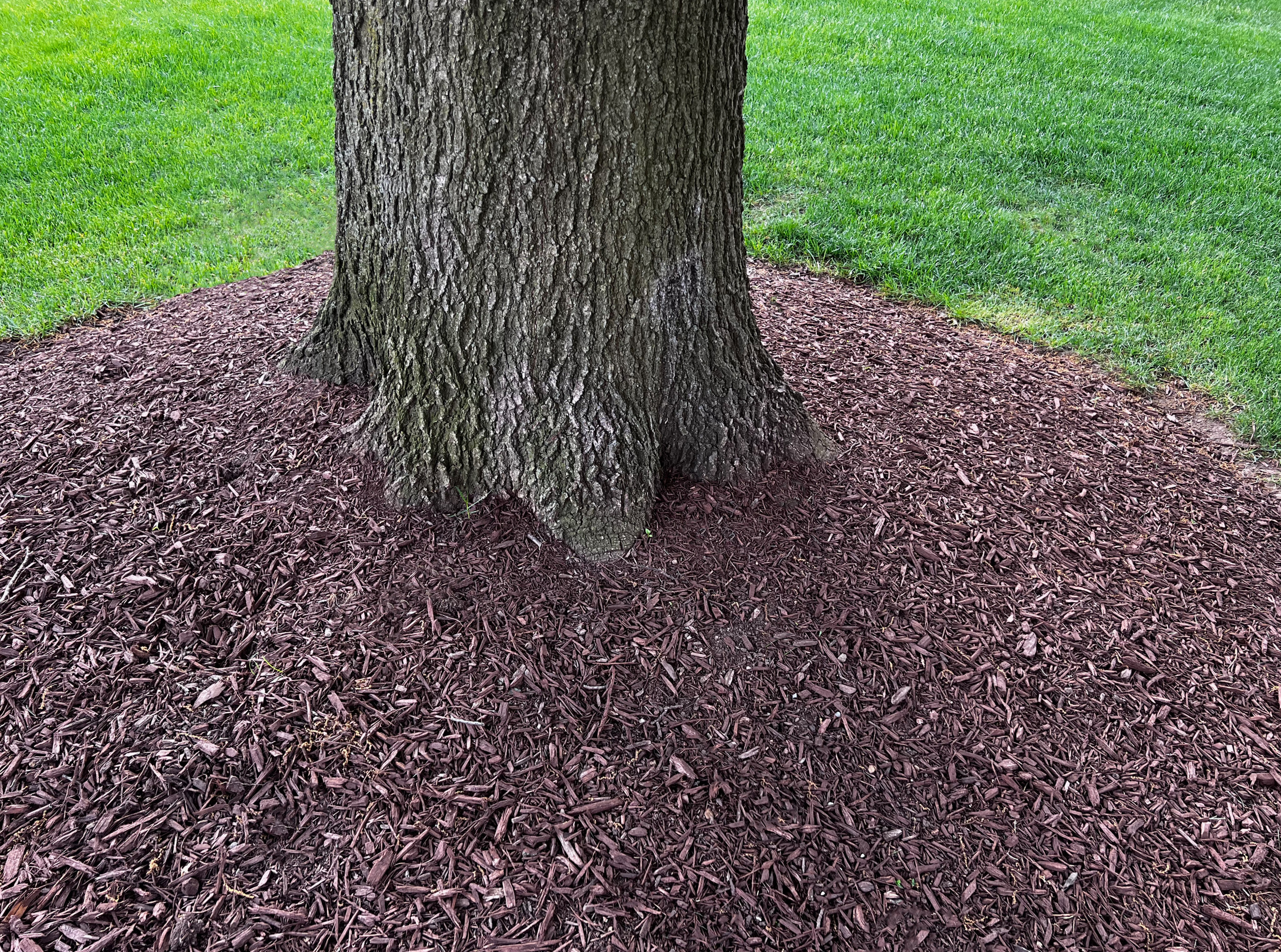by Luke Cronin
Share
by Luke Cronin
Share

Tree roots can quietly wreak havoc on a home’s foundation. As they expand and grow, they can push against structures, leading to costly repairs. Addressing tree root damage quickly is crucial to maintaining your property’s value and safety.
Understanding Tree Root Damage
Tree roots are silent invaders. As they stretch out in search of nutrients and moisture, they might look serene, but their impacts can be anything but. A home’s foundation is often their unintended target, and that’s when trouble begins.
Roots are naturally opportunistic, and they tend to follow paths to where they can find water and minerals. Foundations, especially those with tiny cracks, become accidental conduits. As roots find their way into these openings, they can incrementally widen them, jeopardizing the structural integrity over time. It’s not just a matter of infiltration; roots can apply so much lateral pressure that they cause the foundation itself to shift or crack under stress.

The larger the tree, the more significant the potential for damage. Some trees have more aggressive root systems than others and can be repeat offenders. Understanding this dynamic is critical for homeowners hoping to preemptively tackle potential issues.
For a deeper dive, check out How Tree Roots Can Impact Your Home’s Foundation.
Identifying these issues early is key, turning potential disasters into manageable tasks. Knowing what to look for can save both time and money down the line. It’s a necessary blend of awareness and action: treating the problem before it takes root—literally.
Steps to Take if Tree Root Damage Affects the Foundation
What Do You Do If Tree Roots are Damaging Foundation?
If you’ve noticed signs that tree roots are compromising your foundation, act swiftly. Here’s a no-nonsense plan:
- Consult a Professional: The first step is to call in the pros. Find a foundation expert or arborist to assess the situation. They’ll give you an accurate picture of the damage and outline your options.
- Address Immediate Damage: Once you’ve got expert advice, tackle any urgent repairs. Focus on stabilizing the foundation to prevent further damage. For an in-depth look at repair strategies, check out Foundation Damage: Top Solutions for Effective Repair.
- Plan for Tree Management: Your long-term solution might involve a little tough love for your trees. You might need to trim or even remove problematic trees. A professional tree service can help you decide the best course of action that balances safety and aesthetics.
Act decisively but wisely, and you can safeguard your home while keeping your landscape as green as possible.
Preventative Measures Against Tree Root Damage
How Do You Protect Your House from Tree Root Damage?
First, plan your landscaping wisely. Start with the right trees; select species known for their tame root systems, and plant them at a safe distance from your house. This way, they grow strong while steering clear of your foundation’s zone. Information on suitable trees can often be found at local garden centers or through landscaping professionals.
Regular maintenance is key. Prune roots annually to keep them from inching closer to your home’s foundation. If you catch roots veering off the desired path early on, they’re easier to handle and won’t put your structure at risk. Monitoring soil moisture plays a vital role here too. Uneven moisture levels can drive roots towards your foundation in search of water. By keeping the soil consistently moist—with the help of a strategic watering regimen or irrigation system—you deter roots from seeking hydration elsewhere.
Do Root Barriers Really Work?
Yes, when installed correctly, root barriers can effectively redirect roots away from your home’s foundation. The trick lies in choosing the type that best suits your yard’s particular needs. Physical barriers like plastic or metal work well for many homeowners, offering robust defenses without restricting water movement across the site. Meanwhile, chemical barriers can be an option for situations requiring more aggressive intervention, though these require cautious handling to avoid environmental harm.
Tree Root Barrier Installation
Installing root barriers isn’t a standard DIY task, so it’s wise to consult with experts. Correct installation demands attention to depth and placement. The barriers must be deep enough to block roots from advancing, but still allow water to pass naturally, preventing unintended water pooling or drainage issues. Utilizing professionals ensures the job is not only done right but also offers peace of mind in preserving both the longevity of your trees and the safety of your foundation.
Suitable Materials to Address Tree Root Damage Problems
When it comes to tackling tree root issues around your home, choosing the right materials can make a significant difference in prevention and management. Here are some of the best options to consider:
Best Materials to Cover Tree Roots
- Mulch
A layer of mulch helps to:
-
- Retain soil moisture
- Protect roots by reducing erosion and exposure

Use organic materials like wood chips or bark, which break down over time, enriching the soil and encouraging healthy root growth.
- Gravel or Decorative Stones
These materials are useful for:
-
- Covering tree roots
- Allowing essential water and air to nourish them
Gravel and stones create a tidy appearance in landscaped areas, making them a practical choice for yards while preventing soil compaction.
- Ground Covers
Consider planting low-maintenance, sturdy ground cover plants such as:
-
- Vinca minor
- Hostas
These plants help shield tree roots without interfering with their growth, offering a natural and aesthetically pleasing solution.
Selecting the right materials not only safeguards your foundation but also enhances your garden’s health and appearance. A mindful approach with these materials helps balance the needs of both your trees and your home infrastructure.
How to Remove Tree Roots Safely
Practical Steps for Tree Root Removal
- Manual Removal: If you opt for manual removal, proceed with care. Use sharp cutting tools, like pruning saws or loppers, to trim roots cleanly without excessive damage to the tree. This method works best for smaller roots, allowing for precise cuts that limit root system disruption.
- Chemical Solutions: Turning to chemicals can be risky; it’s a method only to be used when necessary. Chemical root killers can spread and may affect other plants and soil health. Always read instructions thoroughly, and consider this a last resort due to potential environmental harm.
- Professional Services: For big jobs, bring in the pros. Tree removal specialists come equipped with knowledge and tools to tackle tough, extensive root systems without causing additional stress to your property’s foundation. It may cost more upfront but could save you significant trouble down the line.
In conclusion, tree root damage is a silent threat that can lead to significant foundation issues if not addressed promptly. It’s crucial to understand the risks posed by invasive roots and remain vigilant in identifying potential signs of damage, such as cracks in the walls, uneven floors, or ill-fitting doors and windows. Implementing preventative measures like installing root barriers, selecting tree species with non-aggressive root systems, and maintaining consistent soil moisture levels can go a long way in protecting your home’s foundation. When facing existing damage or contemplating tree removal, it’s wise to seek the counsel of professionals who can provide tailored solutions to safeguard your property effectively. Proactive management today can preserve the integrity of your home for years to come, ensuring it remains a safe and stable environment for you and your family.

